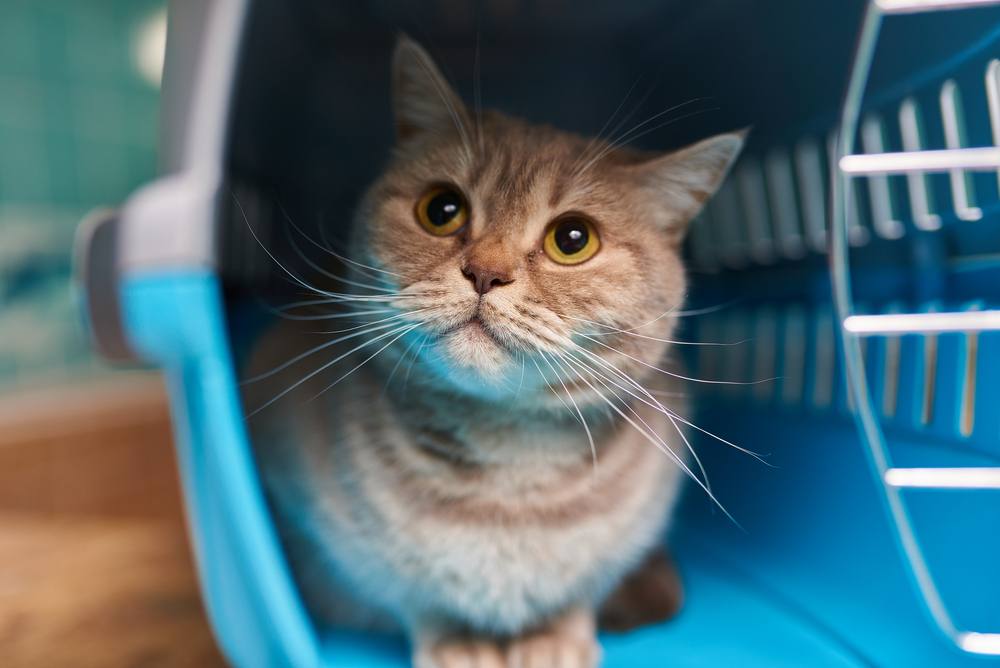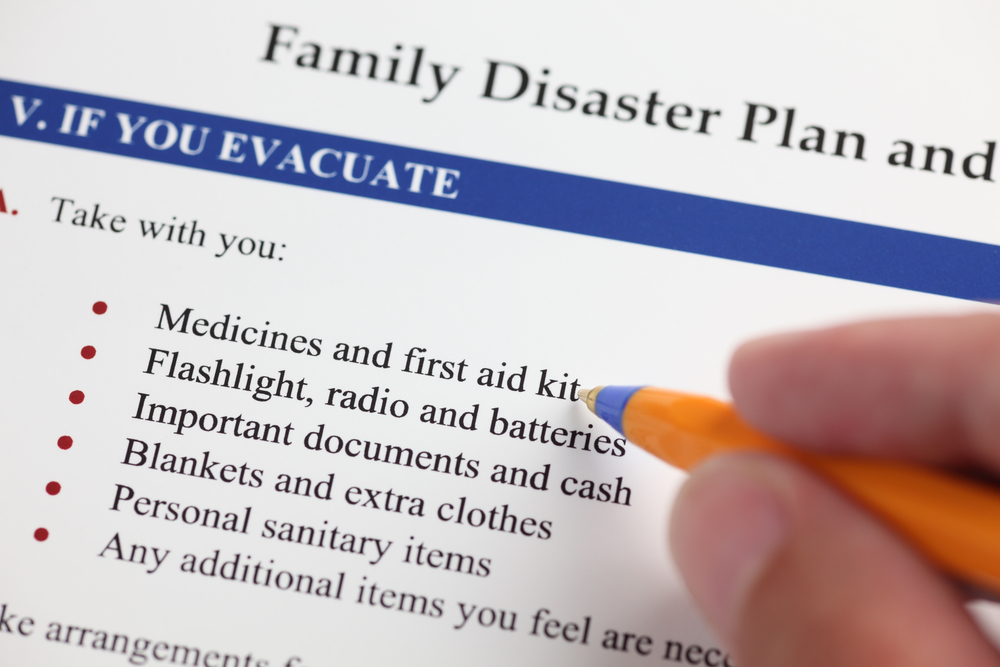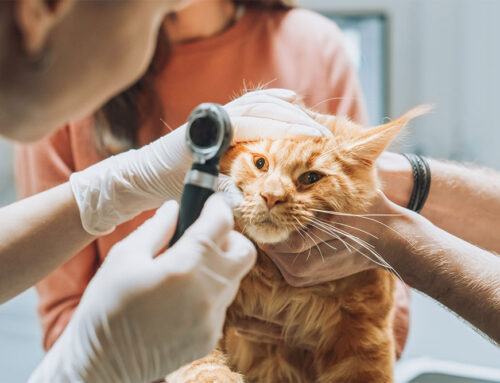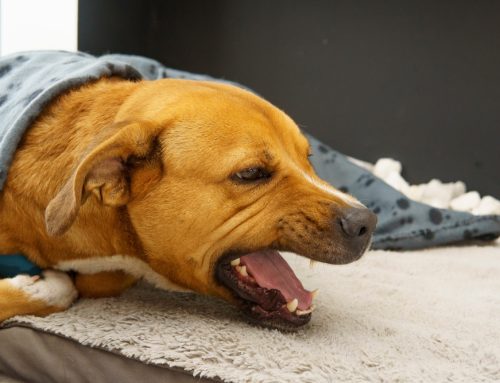There never seems to be enough hours in the day to get it all done, from Zoom calls, to home chores, to running errands, to furry pals always reminding you it’s meal- or playtime. However, home emergencies, or natural disasters, can strike at a moment’s notice, and taking time to prepare yourself and your pet will decrease stress, and ensure a quick, safe response. Many pets have been lost and affected by natural disasters, and in response to previous unfortunate events, the Federal Emergency Management Agency (FEMA) has declared a National Animal Disaster Preparedness Day. Our Livingston Veterinary Hospital team wants to ensure pet owners are prepared should an unexpected disaster strike, and proposes these five ways to include your pet in your disaster plan.
#1: Check your pet’s microchip and ensure their vaccines are current
Regular veterinary examinations are critical to ensure your pet remains healthy into their grey muzzle years. Ensure your pet is microchipped, and during their annual check-ups, ask our veterinarian to check that their chip is functioning properly. A microchip is the safest, most effective, and only permanent means of identifying your pet. Also, ensure your pet’s microchip registration is updated with current contact information. Many pets are displaced during natural disasters or emergency evacuations, and those with a microchip are more likely to be reunited with their family.
Regular preventive care, including vaccinations and parasite control, is the most effective protection from common infectious diseases, so also ensure your pet’s vaccinations are up-to-date. Most shelters, pet-friendly hotels, and boarding facilities require proof of vaccination.
#2: Keep your pet’s medical records up-to-date
Keep digital and hard copies of all your pet’s records available and accessible, in case you are required to evacuate, or relocate, in an emergency. This information is also vital when a shelter, boarding facility, or pet sitter is caring for your pet. Keep the following records up-to-date, and in your pet emergency kit:
- Copy of your pet’s vaccination records and any significant medical history
- Your pet’s microchip number and registration information
- Your pet health insurance contact and policy number
- Your pet’s medications and dosing instructions
- Name and address of your family veterinarian, and veterinary emergency hospitals along your evacuation route
- A current photo of you with your pet, to help prove ownership should they get displaced
- ASPCA Animal Poison Control number
#3: Assemble a pet emergency and first aid kit
Create a pet emergency kit that includes supplies for pet first aid. Do not be tempted to share items from your human first aid and emergency kit, because a pet-specific kit will ensure you have ample supplies. Place items in labeled, dated, watertight bins or boxes to keep supplies clean and dry. Change the food and water in the kits every three months to ensure freshness, and check medications routinely to ensure they have not expired. Your pet emergency kit should include:
- A minimum five-day supply of food, water, and medications for each household pet
- Food and water dishes
- A spare leash, harness, and collar with identification tags
- Elimination supplies, including waste bags, litter, litter scoop, disposable boxes, and cleaning materials in case of accidents
Consider registering for a pet first aid certification course as part of your pet disaster preparedness plan. Remember, pet first aid is never a substitute for veterinary care, but allows you to stabilize your pet prior to professional treatment, and may be life-saving during a natural disaster, when traveling may not be possible. Include the following in your pet’s first aid kit:
- Pet first aid book
- Muzzle
- Clean towels
- Rubber gloves
- E-collar
- Digital thermometer
- Lubrication for thermometer, wounds, or eye protection
- 3% hydrogen peroxide to induce vomiting—used only if directed by your veterinarian
- Saline solution
- Blunt-tip scissors
- Tweezers
- Dawn dish soap or generic equivalent
- Antibiotic ointment
- Benadryl that does not contain xylitol or other medication additives
- Eye dropper or syringes without needles, to give oral medications, or flush wounds
- Gauze roll to wrap wounds, or to muzzle an injured pet
- Non-stick bandages or strips of clean cloth to cover wounds
- Self-adhering, non-stick tape
#4: Make a pet emergency plan and check it twice
The stress of an evacuation, or emergency, can make quick decisions and action difficult. Prepare a checklist or download one here, to ensure you don’t forget any steps in your pet disaster preparedness plan. Make a list of pet-friendly shelters, hotels, and boarding facilities near your evacuation route. Contact your neighbors, friends, or relatives, to ensure you have a back-up pet care plan, should pet-friendly lodging be unavailable. Download the FEMA app for the most current updates during a disaster, and bring pets indoors during a storm or disaster warning.
#5: Keep your pet calm and carry on

Most pets are sensitive to environmental changes, and to worried owners, and may also become anxious or stressed during an emergency. Provide your pet with comfort items such as their favorite toy, bed, or blanket, and consider using pheromone calming spray, such as Adaptil, or Feliway. Long-lasting treats, chews, or puzzle toys can help prevent boredom, and decrease anxiety. Should you have to relocate or evacuate with your pet, ensure you transport them in a well-ventilated crate that is large enough for them to stand up and lie down. Label your pet’s crate with their name, and your name and phone number.
Our Livingston Veterinary Hospital team hopes you never experience the stress of a natural disaster, or an emergency. Call our office if you have any questions about your pet disaster preparedness plan, or to schedule an appointment to update your pet’s vaccinations, and check their microchip.







Leave A Comment